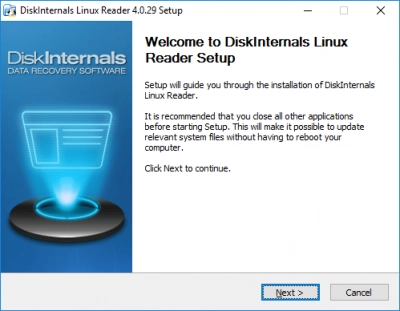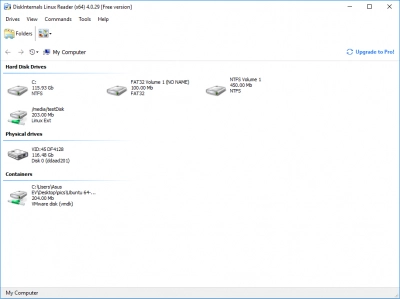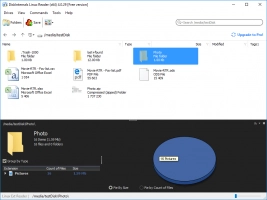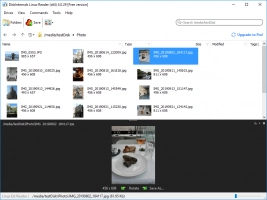Access Linux Ext2 and Ext3 on Windows with Linux Reader!
Here you will find out:
- the difference between Ext2 and Ext3
- how to access Ext2 or Ext3 on Windows
- how DiskInternals can help you
Are you ready? Let's read!
EXT2 VS EXT3
Ext2 and Ext3 are systems that define the way files are named, stored, presented and formatted. They are also known as file system types.
The difference between Access Ext2 or Ext3 is relatively simple; let’s discuss them both.
Ext2
- Second extended file system (Ext2); volume for file sizes from 16GB to 2TB
- Overall system size file has a maximum capacity of 2TB to 32TB
- Recommended for USB and Flash drives because overhead journaling is not needed
Ext3
- Third extended file system (Ext3); maximum file size same as Ext2
- Allows journaling
- Allows conversion of Ext2 file systems to Ext3 file systems
About Ext2 and Ext3 on Windows
You might want Access Ext2 on Windows or Ext3 on Windows, and there are many reasons to do so. For instance, you might want to access it because you want to share Ext2 Windows 10 or Ext3 Windows 10.
Reading Ext3 on Windows and opening Ext3 files on Windows allows you to transfer things like songs, MP3 files, MP4 files, text documents and more. It is an important step in data transfer from Linux to Windows systems if you have a virtual machine on your computer or a dual boot setup.
There are not that many ways to do it: there are many Ext2 managers available which mount Ext2 windows and allow the files to be transferred.
How to mount or access Ext2/3 on Windows
DiskInternals Linux Reader™ is a software package that can help with opening Ext2/3/4 on Windows and more. This is an industry-leading software package that comes in both free and premium versions.
You can not only read file systems on your Windows 10/7/8 computer but also mount them, transfer files and more.
This is an easy way to transfer files from different file systems such as:
- Ext2/3/4
- ReiserFS, Reiser4
- HFS, HFS+
- FAT, exFAT
- NTFS, ReFS
- UFS2
- ZFS (preview only*)
- XFS (preview only*)
- Hikvision NAS and DVR (preview only*)
How to open Ext2/Ext3 files on Windows
1. The first step is to download and install Linux Reader™.

2. Run Linux Reader™ and click on the drive you want to open.

3. Linux Reader™ is a powerful piece of software that will allow you to choose the drive that you want to retrieve, read and mount. You can access different types of files such as MP3 files. icons, images, documents, etc. With so much versatility, you can get any type of file you want.
4. You can also use the SHH protocol to export the file systems from Linux to Windows - available only in Linux Reader Pro™ version.
5. Just by clicking and previewing Windows files, you can easily be on your way to retrieving, mounting and reading those files on your Windows 10/8/7 computer.
In conclusion, reading Ext2/3 file systems is really important for some people in order to do file transfers. Linux Reader™ is a powerful software tool that can make it easier.


